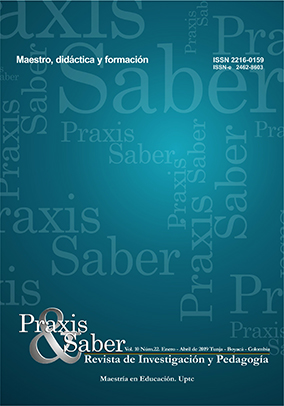Expanding learning spaces and processes in agroindustry through system dynamics

Abstract
An integration strategy is proposed for modeling and simulation of System Dynamics in the Agroindustry program provided by the Institute of Distance Education and Regional Projection of the Universidad Industrial de Santander. The design and implementation of the strategy was carried out through an experiences-based experiment involving teachers and students enrolled in the Animal Nutrition Management course of the agroindustrial program. Such experiences were focused on the use of learning environments in class to complement theoretical knowledge by implementing simulated experiments enabling this knowledge to get closer to real experiences on-site. From this experiences-based experiment and the proposed strategy, it is possible to conclude that learning environments allow decision-making capacities to be developed with the support of simulation scenarios that are very close to the reality on the field.
Keywords
agroindustry, learning, system dynamics, dynamic modeling
Author Biography
Juan Sebastian Angarita-Zapata
Maestría en Ingeniería de sistemas e Informática.
DeustoTech, Fundación Deusto (Bilbao, España)
Carlos A. Vásquez Cardozo
Maestría en Ciencias en Sistemas de Producción Animal
Universidad Industrial de Santander (Bucaramanga, Colombia)
Hugo H. Andrade-Sosa
Maestría en Ingeniería de sistemas e Informática
Universidad Industrial de Santander (Bucaramanga, Colombia)
References
Akcayir, M., & Akcayir, G. (2017). Advantages and challenges associated with augmented reality for education: A systematic review of the literature. Educational Research Review, 20, 1-11. https://doi.org/10.1016/j.edurev.2016.11.002
Abdelkafi, N., & Täuscher, K. (2016). Business Models for Sustainability From a System Dynamics Perspective. Organization & Environment, 29(1), 74–96. https://doi.org/10.1177/1086026615592930
Andrade-Sosa, H., Dyner, I., Espinosa, A., López, H., & Sotaquirá, R. (2001). Pensamiento sistemico: Diversidad en busqueda de unidad. Bucaramanga: Ediciones Universidad Industrial de Santander.
Andrade-Sosa, H., Lince, E., Hernández, A., & Monsalve, A. (2010). Evolución: herramienta software para modelado y simulación con dinámica de sistemas. Revista Dinámica de Sistemas, 4(1), 1-27.
Andrade-Sosa, H.., Navas, X., Maestre, G., & López, G. (2014). El modelado y la simulación en la escuela - De preescolar a undémico grado construyendo explicaciones científicas. Bucaramanga: Ediciones Universidad Industrial de Santander.
Chhipi-Shrestha, G., Hewage, K., & Sadiq, R. (2017). Water–Energy–Carbon Nexus Modeling for Urban Water Systems: System Dynamics Approach. Journal of Water Resources Planning and Management, 143(6), 1-11. https://doi.org/10.1061/(ASCE)WR.1943-5452.0000765
Gómez, U. (2017). SARA: Videojuego para el aprendizaje agrícola soportado en Dinámica de Sistemas (DS). 6th Engineering, Science and Technology Conference Proceedings (pp. 232-238). Panamá: KnE Engineering.
Ojeda, M. & Andrade-Sosa, H. (2018). Gestión de Información de Producción Porcina en Pie, Toma de Decisiones Soportada en Metodologías Blandas Soportada en Metodologías Blandas. Scientia et technica, 23(3), 359-368.
Organización de las Naciones Unidas para la Alimentación y la Agricultura. (2013). Agroindustrias para el desarrollo. Roma: FAO. Recuperado de www.fao.org/3/a-i3125s.pdf
Sun, Y., Liu, N., Shang, J., & Zhang, J. (2017). Sustainable utilization of water resources in China: A system dynamics model. Journal of Cleaner Production, 142(20), 613-625. https://doi.org/10.1016/j.jclepro.2016.07.110
Tsolakis, N. & Sraia, J. (2017). A System Dynamics Approach to Food Security through Smallholder Farming in the UK. Chemical Engineering Transactions, 57, 122-138.
